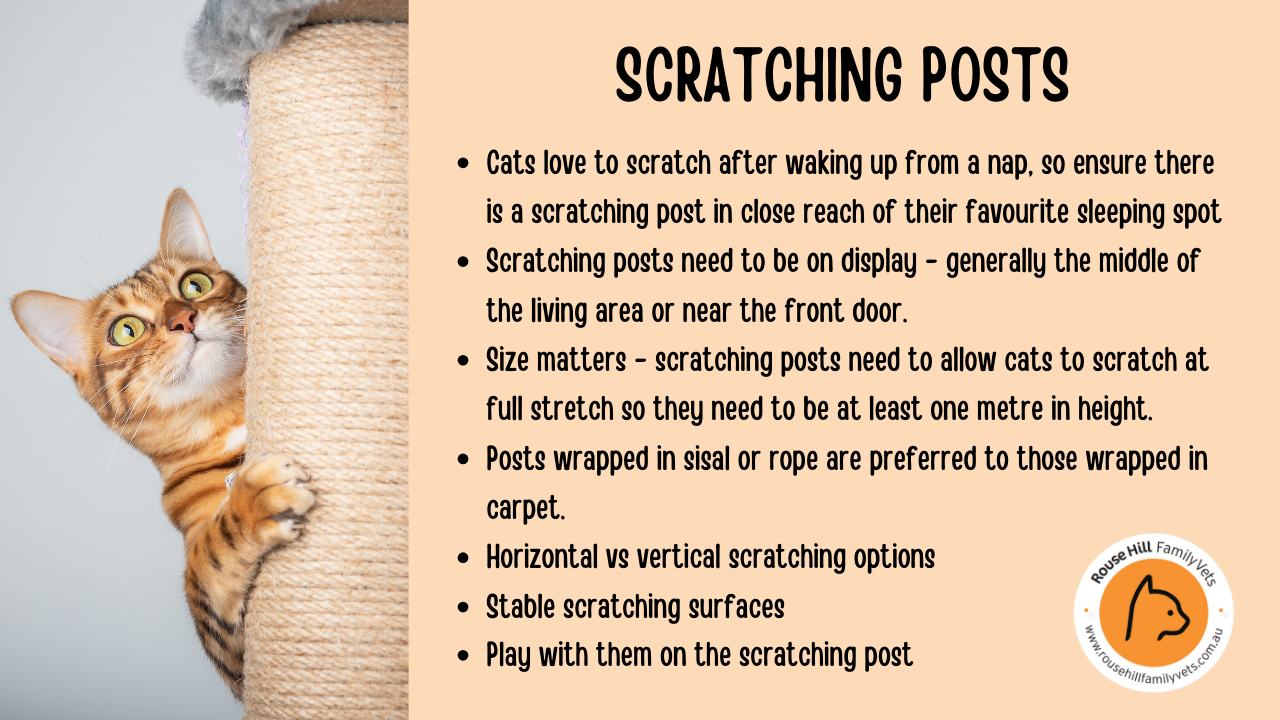Kitten Essentials
APPOINTMENT
Congratulations on the arrival of your new gorgeous little bundle of fur that is full of energy, sharp teeth and needle-like nails. It may take a day or two for them to come out of their shell but in no time at all they rule the house and have you bowing to their every need and want.
It can be an equally exciting and overwhelming experience. Our experienced veterinarians and veterinary nurses are asked these questions everyday and over the years we have found a tried and true way to not only survive the first few weeks with your new kitten but to thrive with them as they grow.
Our team created a 12 step checklist to get prepared for your kitten’s arrival home.
1. Kitten proof the environment
By limiting access to a smaller area in the house you will be setting your kitten up to succeed. If they have too much space to roam around initially it can be daunting, overwhelming and dangerous.
- Kitten proof the main room they will be staying in, remember kittens will put anything and everything in their mouths so be sure to have cords and cables out of reach and ensure chemicals and medicines are safely out of reach.
- Provide access to bed, toys, water, food and a litter tray
- Too much free range will also make it harder to toilet train with your kitten being more likely to have accidents when they need to go to the toilet.
- Ensure you have checked your plants that they are not toxic to cats. Kittens are inquisitive and will chew on new plants and flowers. There are many indoor plants which are toxic to kittens. One of the biggest dangers is bringing Lily flowers into the home – they can cause acute, severe, life threatening kidney failure in cats and kittens so must be kept well away from cats.


2. Veterinary Team
To ensure your kitten is protected against deadly diseases and parasites it is vital that you have a veterinary team that is looking out for your new kitten’s wellbeing.
We recommend an initial health check within 72 hours of your new kitten joining your family. This will allow your kitten to have a full health check, discuss how your kitten is settling into your home and for your veterinary team to check that your kitten is receiving the right preventative care.

3. Parasite control plan
A thorough preventative care plan includes vaccinations, worming, flea, tick and heartworm prevention dates.
By the time you pick up your kitten they should have been wormed regularly and received at least one vaccination. Kittens require a total of three vaccinations with their final kitten vaccination being at 16 weeks of age or older.
It is important that your kitten and your family are protected against heartworm, fleas, paralysis ticks and intestinal worms. Some intestinal worms have zoonotic potential (this means they can be passed onto us) and so preventative care for your kitten helps to keep your whole family safe.
4. Kitten bedding and perches
Cats need to get up high and most houses have all of their furniture on the floor. For this reason we need to provide perches for our cats up high to watch the world go by. Some perches can also double as a bed but it is best to provide them with access to both perches and bedding
Some kittens prefer to curl up in a cozy bed or hammock, while others may prefer to stretch out with their belly raised. Cat trees and climbing frames can work as both however often the beds are too small so make your purchases carefully.
5. Identification and microchip
By law in NSW your kitten should be microchipped before they join your family. The breeder is responsible for changing the microchip into your name. Ensure that you have claimed your pet’s microchip through the NSW Pet Registry.
It is important that you also have a name tag and collar ready so that if your kitten were to become lost it is easier for them to find their way back to you.
6. Litter trays
Toileting training kittens is generally not too difficult. Most kittens are already litter trained by the time they arrive home with you. There are however some litter tray golden rules to follow (pun intended).
- Initially use the same litter that your kitten was already trained to use
- Make litter trays easily accessible – initially in the same room your kittens spends most of their time
- Minimum number of litter trays is 1 litter tray per cat plus 1 additional litter tray
- Litter trays should be 1 adult cat length wide and 2 adult cat lengths long – which means most commercial litter trays are too small for adult cats, so prepare to upgrade the size of your kittens litter tray as they grow
- Scoop regularly (at least twice a day)
- Provide privacy and at least two exits – cats and kittens don’t like to be disturbed during toileting, and if they are they like to have more than one escape route.
- Type of litter – most cats prefer unscented clumping litter, but offering kitten different types of litter and letting them show you their preference is a way to know which litter they prefer best
- Generally self cleaning litter trays and teaching cats to toilet over the human toilet are a recipe for disaster as there are unfortunately many ways in which the kitten can be scared during toileting which may lead to a litter tray aversion or life threatening urinary tract obstruction.

7. Scratching posts
Scratching is a normal behaviour and it is important that you provide your kitten with an outlet for their claws. Cats release a pheromone when they scratch on a surface which signals to them, that this is a place to scratch.
It is important that you introduce your kitten to a scratching post/board at a young age and encourage play and scratching behaviour where you want them to scratch.
Our top tips around scratching posts are:
- Cats love to scratch after waking up from a nap, so ensure there is a scratching post in close reach of their favourite sleeping spot
- Scratching posts need to be on display – as for cats, scratching posts are socially significant which is why cats will often scratch furniture in the middle of the living area or near the front door. To discourage this behaviour give them preferred scratching post options
- Size matters – scratching posts need to allow cats to scratch at full stretch so they need to be at least one metre in height. Attaching a flat scratching board to the wall is another option if a large scratching post won’t fit.
- Posts wrapped in Sisal or rope are preferred to those wrapped in carpet as it is important (for cats) that a mark is left after scratching – they like to leave their mark.
- Horizontal vs vertical scratching options – each cat has their own preference so offering both initially until your kitten shows you their preference is best.
- Stable scratching surfaces – regardless of if the surface is vertical or horizontal cats need it to feel stable and secure to encourage them to scratch.
- Play with them on the scratching post – wand type toys are a great way to encourage kittens to scratch on the post.

8. Pet insurance
You never know what mischief your kitten might find themselves in and so having pet insurance is a good way to have that extra piece of mind that if something happens you are covered.
Most pet insurance companies in Australia are underwritten by two main players. When selecting pet insurance we recommend that you:
- Consider the level of cover appropriate for your family
- Read the fine print – some will have limits on the number of times you can claim for consults per year or sub limits on how much they will pay out per condition
- Most do not cover dentistry – so if you want dentistry covered you’ll have to make sure that’s in your policy
- Behavioural problems are also unlikely to be covered
- Find out if your company offers GapOnly payment and if your veterinary clinic will process GapOnly claims. We provide GapOnly for any large surgical or hospital bills.
- Ask about the claims process – can it be performed online or do you need you to post them forms everytime you want to claim?
- Sometimes you add it on to your own personal insurance or home insurance
We do not recommend one company over another but instead suggest you look into the above points when considering insurance and then make the decision based on your family’s needs.
9. Pheromones – Feliway
Feliway is a synthetic pheromone. A pheromone is a chemical signal which sends odorless messages to other members of the same species. Feliway replicates Feline Facial Pheromones which are the same pheromones happy cats rub on the furniture. It provides comfort and security to cats of all ages. This helps kittens to feel reassured and relaxed in new situations, such as joining a new home and helps to reduce signs of stress and anxiety.
Feliway is best used in the diffuser form for new kittens settling into their new home. Plug the feliway diffuser in the room where they will be spending most of their time. Feliway can be safely used in the long term if needed however the first two months in the new home are most important.
10. Kitten appropriate diet
Growing kittens require a nutritionally balanced diet to ensure they grow to become healthy happy cats. Home prepared meals can be difficult to balance appropriately but can be done with consultation with a veterinary nutritionist. We recommend feeding a high quality kitten kibble and kitten wet food specific to your kitten’s individual needs.
What NOT to feed your kitten
- Raw meat/bones – your kitten’s gastrointestinal tract is immature which makes them more susceptible to raw meat borne infections such as salmonella and campylobacter
- Chicken necks
- Chocolate, onions, garlic, grapes, sultanas, macadamia nuts
- Pork – this tends to be too rich on kitten’s tummies and will often cause diarrhoea
What you CAN feed your kitten as treats
- Boiled chicken
- Dehydrated meats
- Kitten Greenies
- Liver treats
- Squeezy cat treats e.g. Dine or Churu Inaba

11. Kitten safe toys and games
Kittens are curious and love to get into mischief especially when they are not receiving appropriate mental and physical exercise. We recommend playing with your kitten (cat) every day particularly if they are indoors only. The best part about playing with your kitten daily is that it strengthens your bond with each other and is fun for both of you.
The types of toys and games we DO recommend are:
- Fishing rod or wand toys – these are great interactive toys.
- Ensure you move the toy about like it is a prey animal (e.g. flicking from one place to another) rather than dangling it around in front of their face.
- Allow them to catch and “kill” the toy regularly to keep them interested in playing
- Drag the toy around corners to make it more exciting for your kitten
- Finish the playing session with a treat to mimic the natural “hunt, eat, sleep” cycle.
- Food dispensing toys – they can be a great way to reward your kitten with little bits of food as they play. We recommend:
- Kongs
- Food dispensing balls
- Doc & Phoebe’s indoor hunting system
- Interactive puzzle toys
- Cardboard boxes
- Tunnels
- Perches
- Climbing frames
The toys and games we DON’T recommend are:
- Laser pointers – they will often cause frustration
- Your hands or feet – don’t encourage them to chew
- String or wool

12. Grooming tools
It is important to start good grooming habits early so making sure you have the following grooming equipment ready for your kitten:
- Brush and comb
- Nail clippers
- Toothbrush and pet safe toothpaste
Whilst kittens will lose all of their baby teeth by the time they are 6 months old, it is important to get them used to having their teeth brushed daily so that we are protecting those adult teeth from day 1.
Making a difference when it matters the most

Address
10/591 Withers Road,
Rouse Hill NSW 2155

Opening Hours
Monday - Thursday: 9am - 6pm
Friday: 9am - 5pm
Saturday: 9am - 1pm
Sunday & Public Holidays Closed
In-home euthanasia services run outside of opening hours by appointment only

Contact
Phone: 02 9086 9130
Email: hello@rousehillfamilyvets.com.au
Please fill out the form below and a member of our team will be in touch with you shortly. Alternatively please contact us directly at 02 9086 9130.

